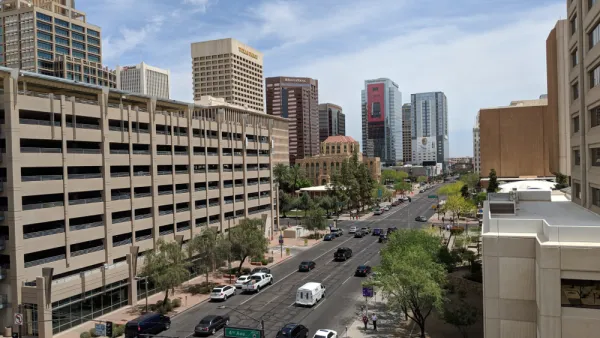In 2009 we worked with Ron Thomas, Mary Means, and Goody Clancy to help plan and run a large 500+ person visioning event in the town of Shreveport. We set up the event the night before with computers at every table for brainstorming and a [...]
In 2009 we worked with Ron Thomas, Mary Means, and Goody Clancy to help plan and run a large 500+ person visioning event in the town of Shreveport. We set up the event the night before with computers at every table for brainstorming and a keypad polling system providing each participant with a handheld device for voting and prioritizing strategies in the region. We had a tech table set up next to the audio/filming crew, a group that was very helpful in getting us what we need to set up. We tested everything, including making sure the keypads registered in the far corners of the convention space.
The next day the meeting started well. Then came the time to conduct the first keypad vote. We started with demographic questions to learn more about who was at the meeting and to give us the ability to do cross tab analysis of the polling data to see how different groups voted. I explained how to use the keypads and then asked people how long they had lived in the area. A vote counter in the corner of the screen indicated how many votes had been cast. To our horror, the count petered out at 190 to 210 even though we knew there was at least twice that many people in the room. My crew scrambled to figure out what was wrong, we reset the vote but again, less than half the room's votes were coming in. We switched over to the brainstorming exercise in the hopes that we could fix the problem with the keypads. Only a few minutes into the brainstorming exercise, however, and hands started going up with complaints that their computers were no longer linked to the network. I went over to Ron Thomas and said, that's strike two, in events this big you don't get three strikes, time to go old fashion pen & paper. What caused the problem was hard to determine but several theories emerged. Some wondered whether all the equipment of the AV crew caused interference with wireless used by the keypads and computers. Another theory was that the Caddo-Bossier Office of Homeland Security, nearby, was working with some new technology that interfered with the wireless? Also possible, we simply needed a more central/elevated antennae structure for the wireless keypads to accomodate for the size of the room and the number of people using the space. The most important thing was that we had a Plan B and a Plan C for backup. Despite the technical problems, it was a successful meeting with positive reviews in the evaluation survey. The plan was adopted and the city and parish have since approve funding to hire a new planner for the planning commission to coordinate implementation of the plan with a number of initiatives already taking shape.
That's one example of equipment failure, we have also had events hampered by 2 feet of snow falling the night before, and meetings where angry protesters started chanting and yelling, trying to shut down the process.
"What to do when public participation goes terribly wrong" is the title of a session PlaceMatters is facilitating at APA next month. As a non-profit with a mission to spread the use of tools and techniques effective in improving land use planning and community development, this means shared the tough situation stories as well as the successes. Holly St.Clair from Boston's Metropolitan Area Planning Council and John Fernsler from WRT (the first firm to win APA's new professional excellence award) will also be joining us and sharing some of their experiences and how crisis was averted. The plan is to also share stories submitted to us.
Send Jason Lally on my staff your stories, videos, and/or pictures ([email protected]). It can be just a sentence or two just to give us a feel for the situation. If we select your story, we may ask you for more details. If you have any near misses or actual disasters in public planning/facilitation, please send them our way. We'd love to include your story. We will send $20 gift cards to the top 2 submissions. And join us in Boston at APA, April 10 from 1-2:15PM (S456).

Analysis: Cybertruck Fatality Rate Far Exceeds That of Ford Pinto
The Tesla Cybertruck was recalled seven times last year.

National Parks Layoffs Will Cause Communities to Lose Billions
Thousands of essential park workers were laid off this week, just before the busy spring break season.

Retro-silient?: America’s First “Eco-burb,” The Woodlands Turns 50
A master-planned community north of Houston offers lessons on green infrastructure and resilient design, but falls short of its founder’s lofty affordability and walkability goals.

Test News Post 1
This is a summary

Analysis: Cybertruck Fatality Rate Far Exceeds That of Ford Pinto
The Tesla Cybertruck was recalled seven times last year.

Test News Headline 46
Test for the image on the front page.
Urban Design for Planners 1: Software Tools
This six-course series explores essential urban design concepts using open source software and equips planners with the tools they need to participate fully in the urban design process.
Planning for Universal Design
Learn the tools for implementing Universal Design in planning regulations.
EMC Planning Group, Inc.
Planetizen
Planetizen
Mpact (formerly Rail~Volution)
Great Falls Development Authority, Inc.
HUDs Office of Policy Development and Research
NYU Wagner Graduate School of Public Service



























